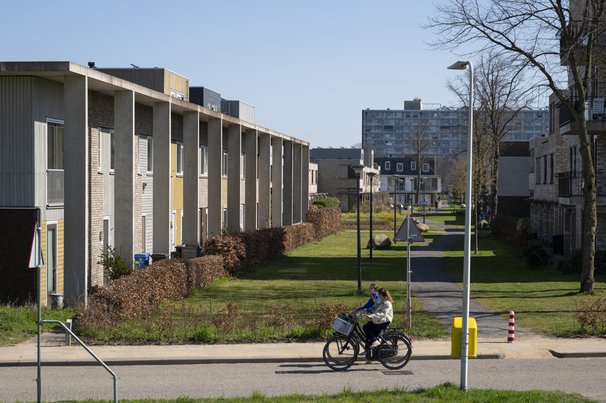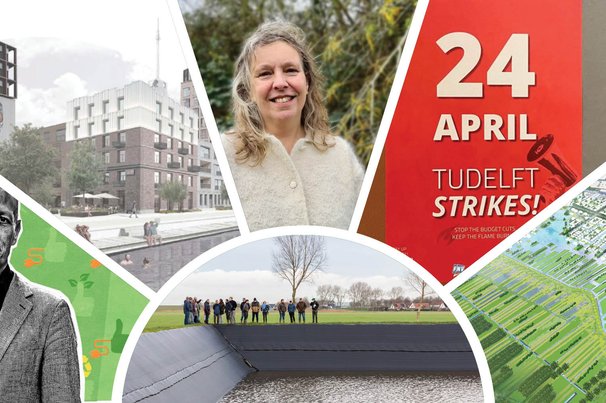Nieuws According to the Dutch government, the urban corridor is where Europe’s economic growth potential is to be found. Although urban agglomerations indeed hold a concentration of economic activity and employment opportunities, the concept of a European economic ‘backbone’ is a myth, says Friso de Zeeuw.
Samenvatting
In de stedelijke corridor zit volgens de Nederlandse overheid de economische groeipotentie van Europa. Weliswaar vindt een concentratie van economische dynamiek en werkgelegenheid plaats in stedelijke agglomeraties, maar het idee van een economische ‘ruggengraat’ van Europa is een mythe, stelt Friso de Zeeuw. Dit artikel ontmaskert de mythe van de Banaan en geeft een aanzet voor een op recent onderzoek gebaseerde zienswijze. Dat is ook van belang voor publieke en private investeringsstrategieën.
De term Blauwe Banaan werd in 1989 geïntroduceerd door de Franse geograaf Roger Brunet van het onderzoeksinstituut RECLUS in Montpellier. Hij beschouwde de stedelijke corridor, met zijn concentratie aan industriële bedrijvigheid en dienstverlening, als de economische ‘ruggengraad’ van Europa.
Voor zover er al bovengemiddelde interactie bestaat tussen de stedelijke gebieden binnen de Banaan, is die vaak niet gebaseerd op geografische nabijheid. Recent onderzoek van de Universiteit van Utrecht en de TU Delft laat bovendien zien dat de economische prestaties van Europese regio’s nauwelijks afhangen van hun ligging in een Europese corridor. Het ontbreken van opkomende economieën als die van Polen getuigt van het feit dat het banaan-model dateert van voor de Val van de Muur.
We kunnen concluderend stellen dat de Blauwe Banaan geen meerwaarde (meer) heeft. Te veel krachtige stedelijke agglomeraties liggen buiten de boog en bovendien ontbreekt meestal de geografische samenhang tussen de stedelijke gebieden binnen de Banaan.
Lees hier het gehele artikel in het Nederlands.
At present, 70 percent of the European population lives in cities, and this percentage will continue to rise over the coming years. Cities play a central role in economic and societal developments. Under the political leadership of the Dutch Minister of the Interior, Ronald Plasterk, (municipal) administrators, advisors and researchers discussed the ‘Urban Agenda’ this year. This ‘national rap session’ welcomes all contributions and thoughts. Simultaneously, Europe is also set to launch a similar initiative: its Urban Agenda will be presented in 2016 when the Dutch will hold EU presidency. This underscores the importance of giving substance to this agenda. No one wants a non-committal European rap session or – even worse – new European legistlation, as was confirmed during a project consultation round.
‘Urban agenda’
The ‘Urban Agenda’ could potentially address linking European investment schemes (for instance the infrastructure programme) to the dynamics of the development of urban areas. It may also zero in on sharing knowledge regarding growth, population decline, climate change, (technological) innovations, governance, etc. A policy agenda should be based on a thorough analysis, the backbone of which should be formed by actual spatial, economic and demographic developments. And it is exactly this analysis that is lacking. ‘The Blue Banana holds Europe’s economic growth potential,” says the Ministry of the Interior and Kingdom Relations.
This article exposes the myth of the Banana and suggests a perspective based on recent research results. Which also has implications for public and private investment strategies.

‘Throw the Blue Banana in the Green Recycling Bin - Afbeelding 1’
Box: The Blue Banana
There it was again: the Blue Banana, in an advertisement for KPN: “Receive a 20% discount on shipments to the economic heart of Europe.”
The term Blue Banana was introduced in 1989 by French geographer Roger Brunet of the RECLUS research institute in Montpellier. He considered the urban corridor, with its concentration of industry and services, to be Europe’s economic ‘backbone’.
According to Brunet, the origins of the zone can be traced back to age-old trade routes that connected the urban areas within the corridor. During the Middle Ages, Italian city-states such as Venice and Genoa maintained intensive contact with Flemish textile cities such as Ghent and Bruges. Later economic and political developments caused other cities and regions to latch on to the zone, lending the spatial-economic corridor its current banana shape.
Brunet had clear intentions for his model. He used it to demonstrate that France had lost connection with Europe’s economic centre. The politics of economic and political concentration on Paris had failed. The simplicity and strong imagery of the Blue Banana took effect: policy makers and advisors were quick to pick up on the concept. Researchers applied the model in their studies and lobbyists used the corridor to obtain money from governments so that peripheral areas could work to connect to Europe’s economic centre.
Blue Banana the Economic Backbone of Europe?
Undeniably, Europe (also) sees concentrations of population, economic activity and the employment opportunities in urban agglomerations. Do those agglomerations that lie within the Blue Banana indeed form the economic backbone of Europe (and, consequently, do those beyond the Banana not?). The banana would include London, the Dutch Rompertje (majority of the Randstad, parts of Brabant and Gelderland), Rhine-Ruhr (Cologne, Düsseldorf) and Rhine-Main (Frankfurt) and North Italy (Milan). Are these urban areas within the Banana interconnected?
To immediately address the latter question: to the extent that there is above-average interaction, this is seldom based on geographic proximity. Moreover, recent research by Utrecht University and TU Delft shows that the economic performance of European regions is hardly impacted by their location within a European corridor. The absence of emerging economies such as that of Poland bears witness to the fact that the banana model dates back to before the fall of the Berlin Wall.
France
France also falls beyond the perimeter of the arch; with Paris and successful southern regions such as Toulouse, with its aerospace industry and medical sector, and Lyon, with its nanotechnology cluster. On the southern edge of the Blue Banana, the position of northern Italy has weakened, whereas to the north, a number of Scandinavian regions are currently thriving.
To the extent that there is above-average interaction, this is seldom based on geographic proximity
In smaller regions, thinking in terms of economic corridors may be useful. Zooming in on individual urban areas in Europe, we see that economic and demographic areas are spread across the continent like confetti. In France, in addition to Paris and Toulouse and Lyon which were mentioned earlier, we also notice the strong position of the Nantes-Rennes region. The area is home to an automotive industry that is still flourishing, and also harbours the pinnacle of the agrifood technology sector. The greater Bordeaux area and major stretches of the Mediterranean coast – with a leading role for the Côte d’Azur – are characterized by the influx of a large number of seniors and well-to-do buyers of first or second homes; both groups stimulate the local service economy.

Artwork Tiger and Turtle in Duisburg, Germany. Photo: Flickr / Dirk
‘Throw the Blue Banana in the Green Recycling Bin - Afbeelding 2’
Germany
In economically prospering Germany, the best opportunities for financiers and investors are still in a limited number of successful regions, such as Hamburg, the Rhine-Ruhr- zone (with the major cities Cologne and Düsseldorf) and the Rhine-Main-area around Frankfurt. Parts of Bavaria and Baden-Württemberg have been achieving outstanding economic results for decades. The subsequent favourable employment market has a further magnetic effect.
Beyond Münich and Stuttgart smaller cities such as Regensburg, Neurenberg, Augsburg, Heidelberg and Konstanz are also demonstrating notable growth. The same is true for Münster en Osnabrück in the northwest. Far removed from the Banana we find Germany’s largest cities Berlin/Potsdam and Hamburg. After decades of economic standstill, Berlin has finally developed into an economically successful region, followed at some distance by Leipzig and Dresden.

None http://gebiedsontwikkeling.nu/workspace/uploads/blue-banana-2-55fe7005a9d08.jpg
‘Throw the Blue Banana in the Green Recycling Bin - Afbeelding 3’
This map is based on regional forecasts for the period 2014 through 2025, as calculated by British advisory firm Oxford Economics. This analysis was limited to regions within the European Union (nearly 900), through to the lowest available economic-geographic level (NUTS 3). The following indicative parameters are included:
- Size of the economy: gross national product (average level from 2014 – 2025);
- productivity level of the economy: gross national product per capita of the population (average level from 2014 – 2025);
- size of the population (average level from 2014 – 2025);
- population growth;
- working age population growth (ages from 15 to 65);
- growth of employment market (in FTE);
- growth of the average disposable income per household (after deduction of taxes).
This study (2014) was commissioned by BPD Development, as a building block for the company’s European investment strategy.
Toward More Useful Propositions!
In conclusion, we may deduce that the Blue Banana (no longer) brings added value to the table. Too many strong urban agglomerations lie beyond the scope of the arch and there is moreover rarely a geographic connection between the urban areas that do fall within the parameters of the Banana. The map given above provides an alternative approach, based on a forecast for the next ten years in terms of the economy, (working age) population, employment market and income.
A sound analysis of urbanization patterns and subsequent forecasts (that must always be applied with caution) may provide a foothold for public and private investment strategies. Because the mantra here is go with flow. An example to illustrate: According to Carolien Gehrels, director Big Urban Clients of Arcadis (and former alderman of Amsterdam), a maglev connection between Amsterdam, Groningen, Hamburg and Berlin should have been built years ago. Even a very basic analysis shows that the European taxpayer is extremely lucky that this idea never caught on.
On the other hand, an informal gathering of mobility experts (the ‘Moreelse Tafel’) proves that our country is capable of making worthwhile propositions concerning the upgrading of the European railway network. A great – and free – contribution to the ‘Urban Agenda’. But first, we have to chuck the Blue Banana in the green recycling bin.
Cover: ‘2015.09.21_Throw the Blue Banana in the Green Recycling Bin_cover’





